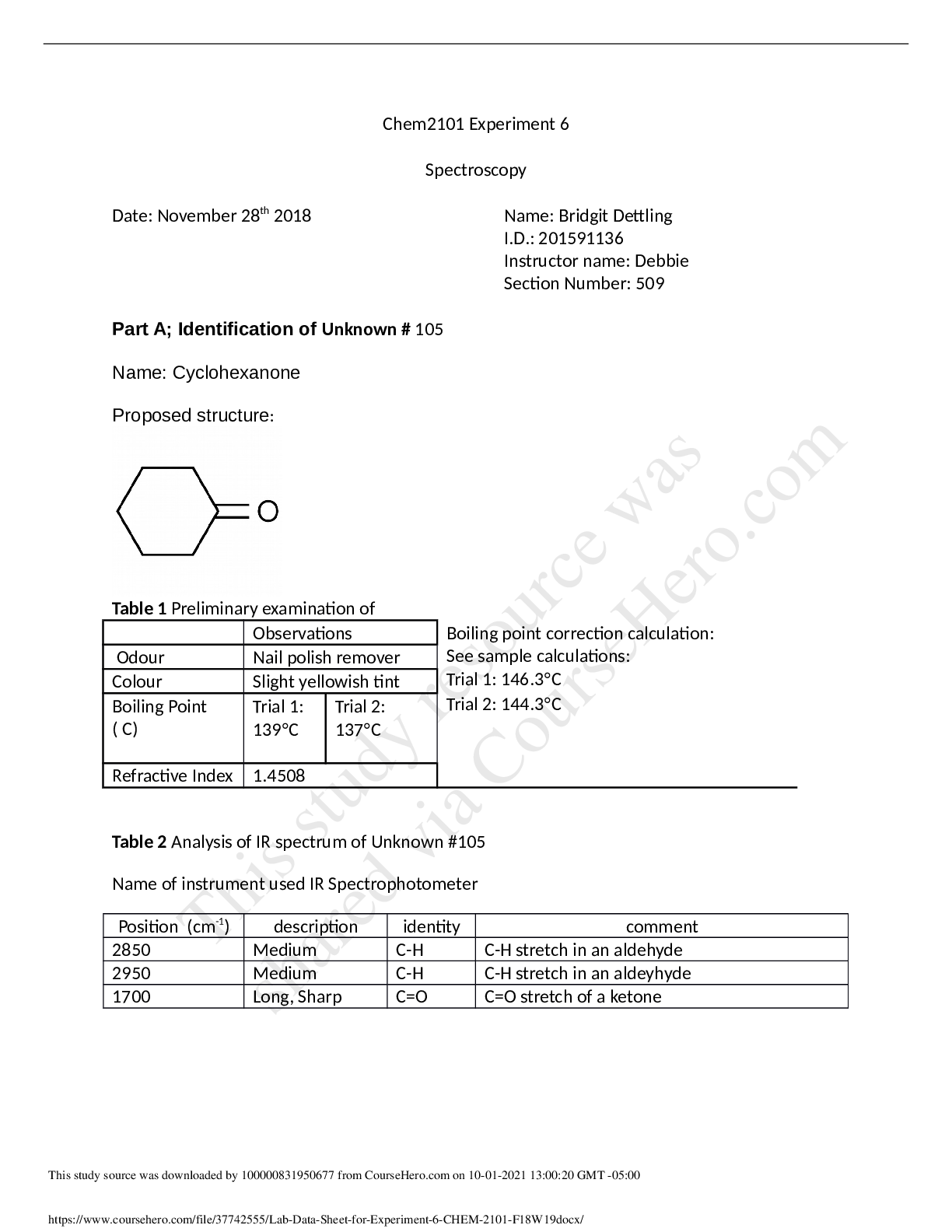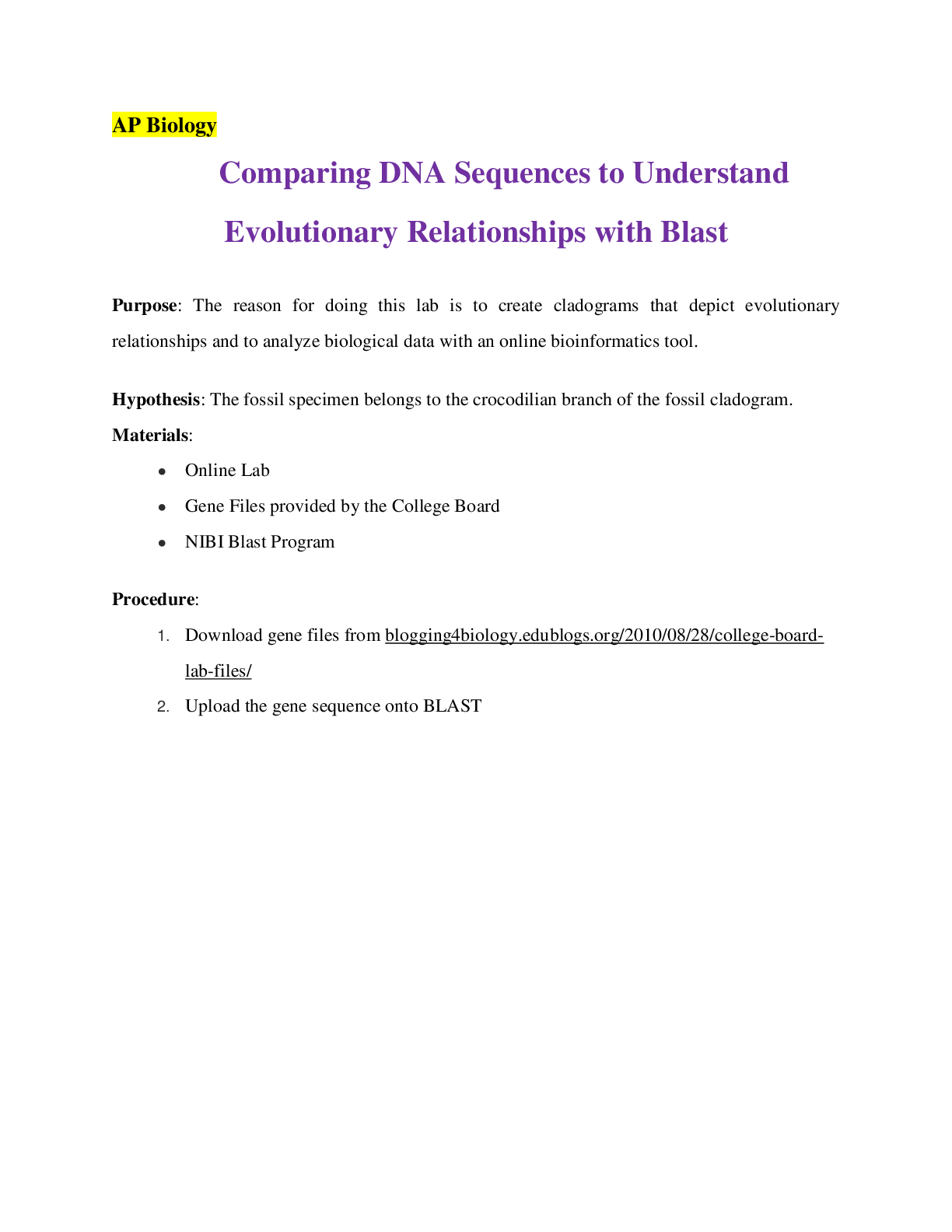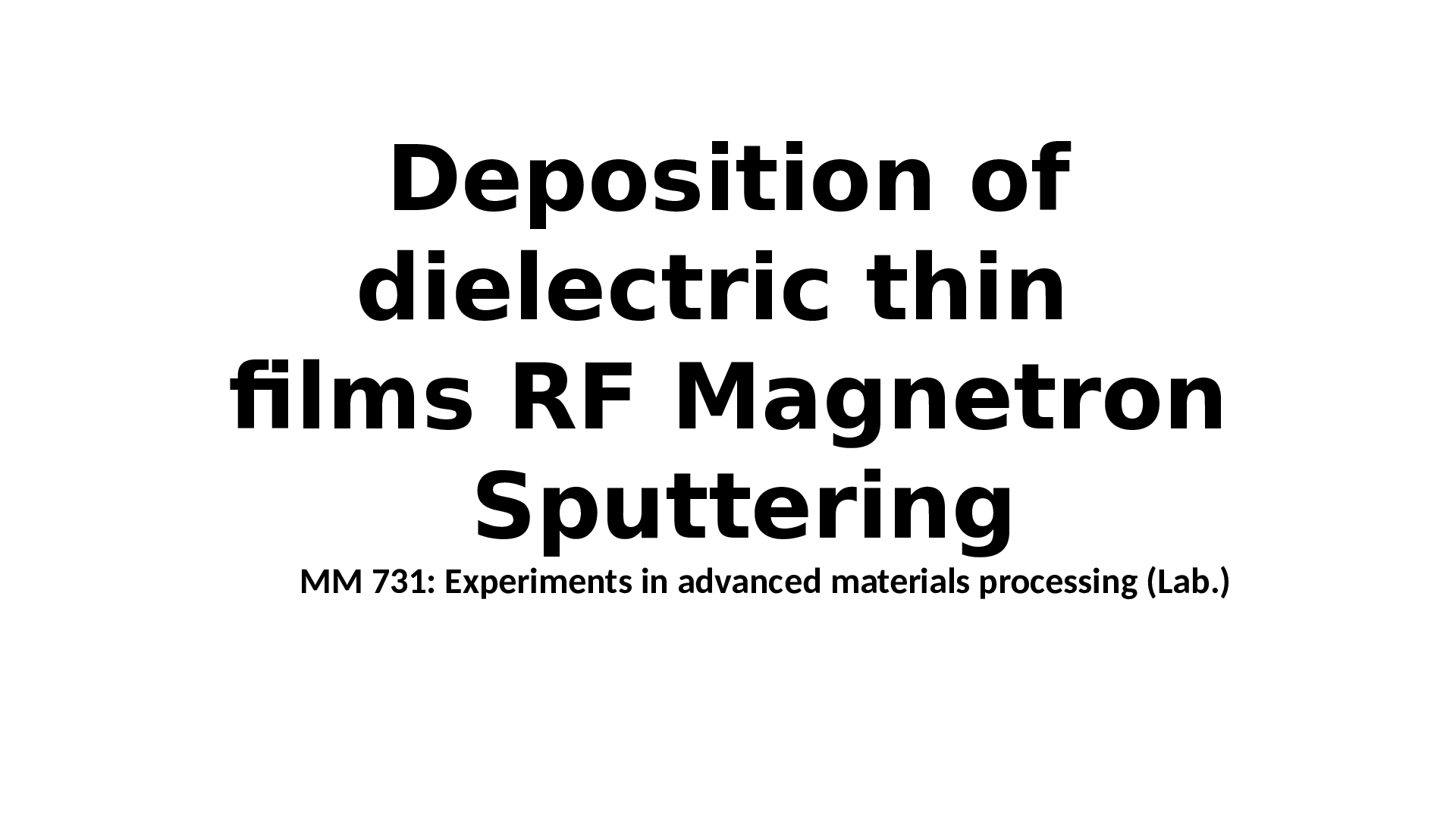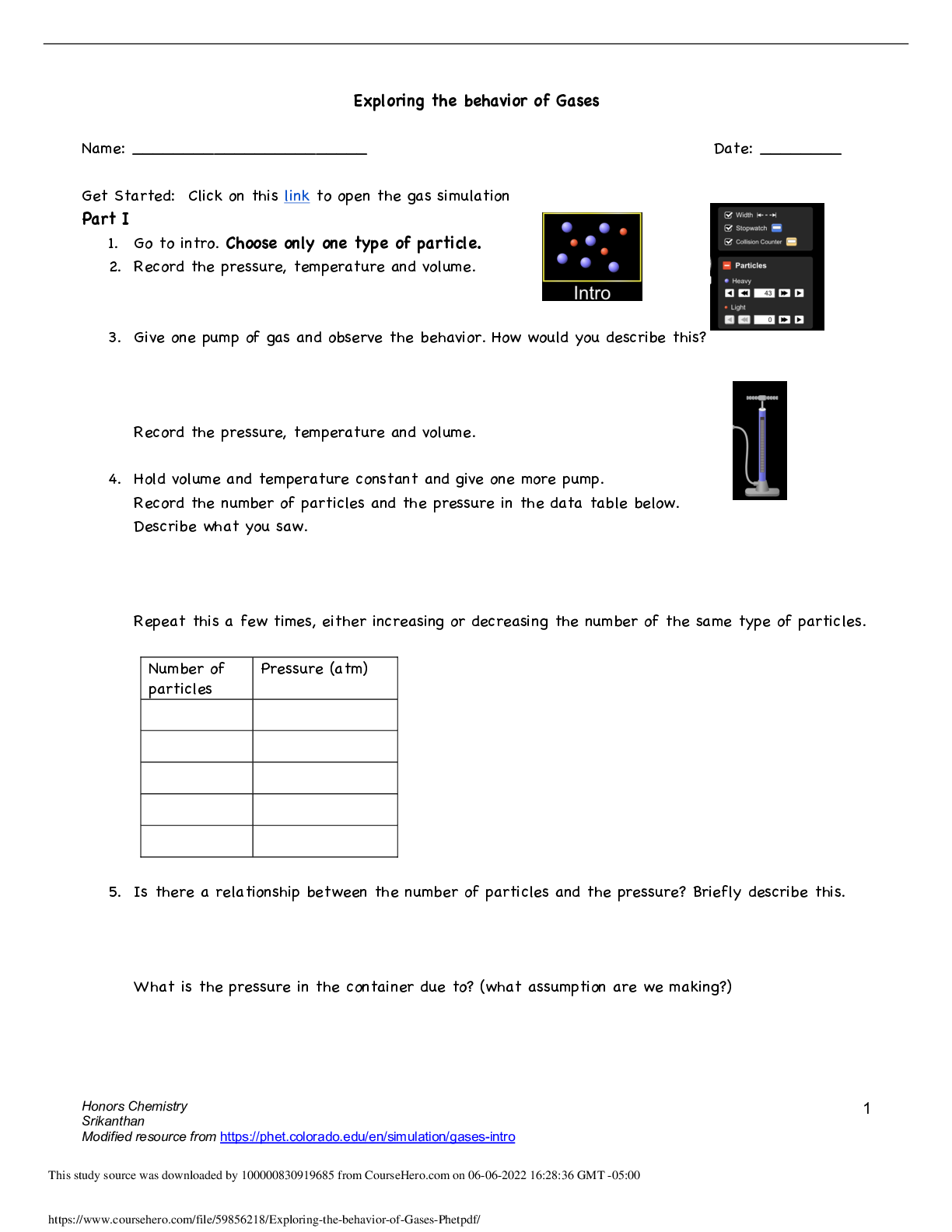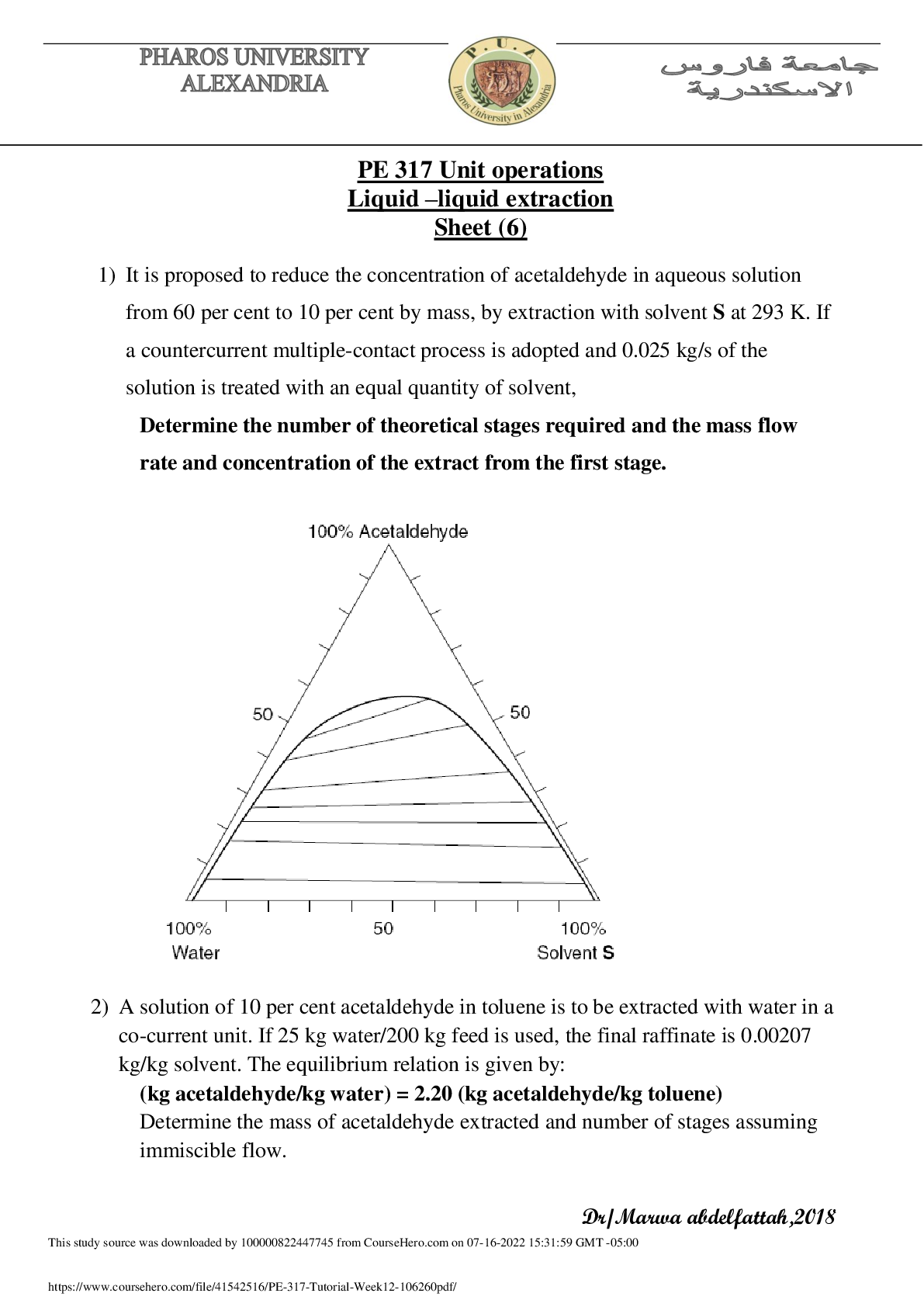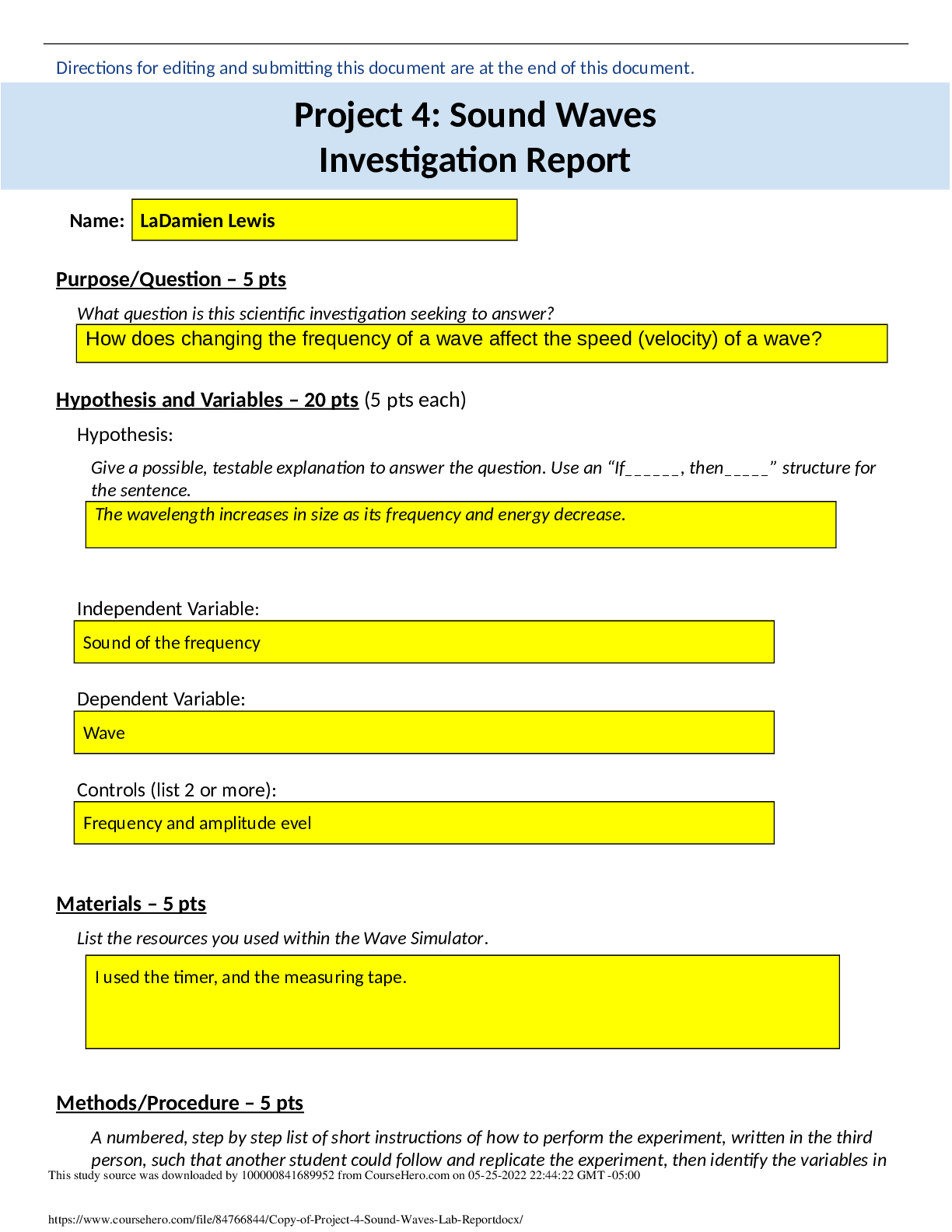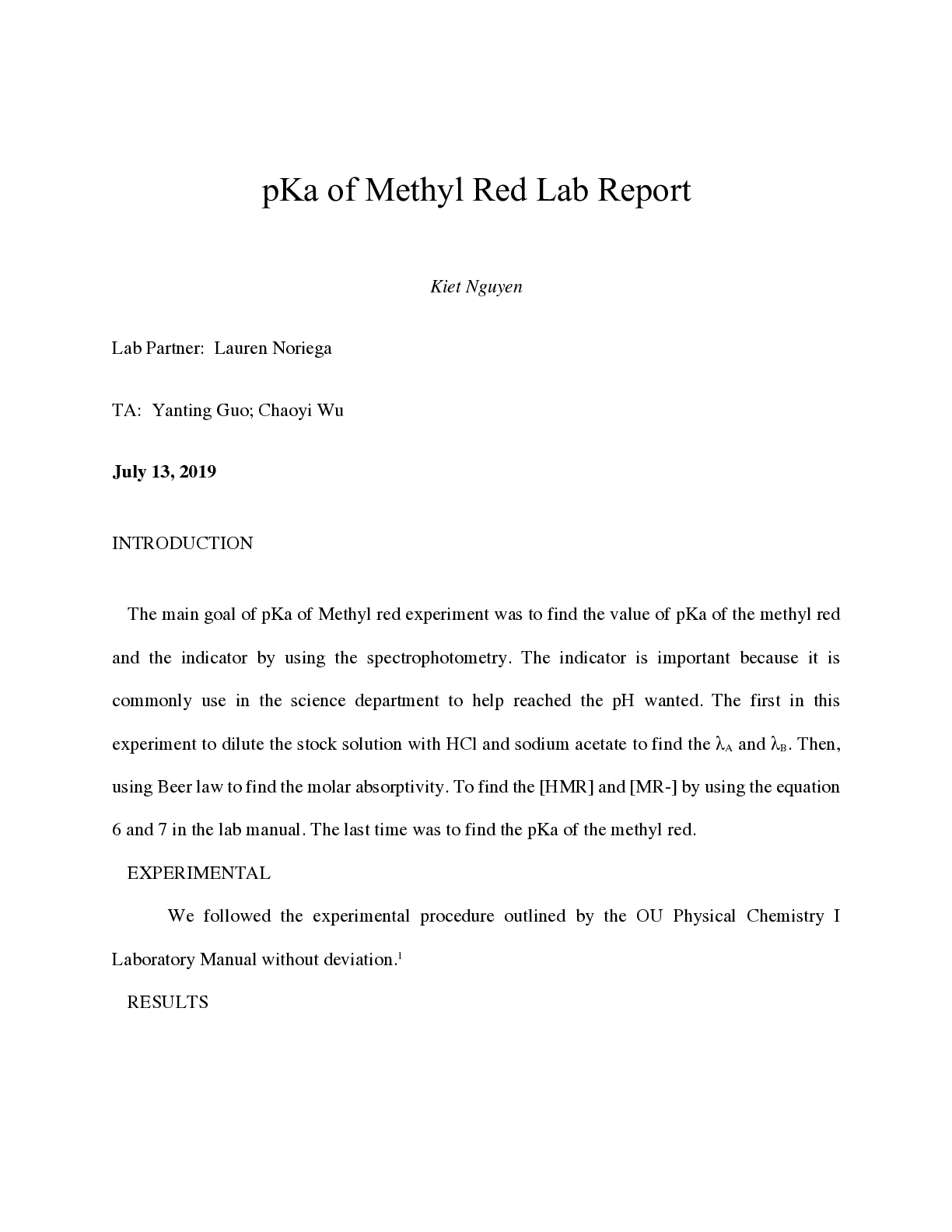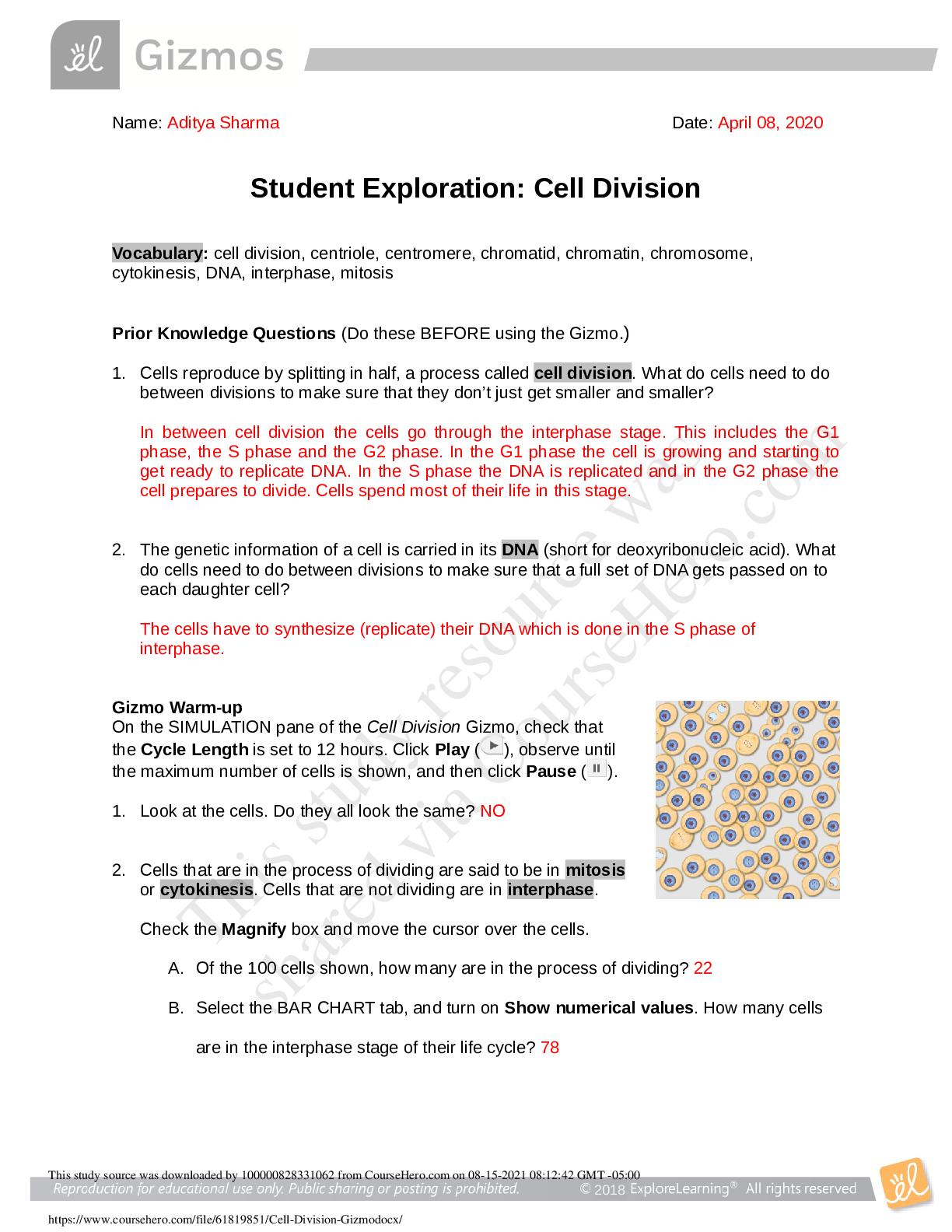Chemistry > Experiment > CHEM 2101 Experiment 2 (All)
CHEM 2101 Experiment 2
Document Content and Description Below
Discussion: Regarding the polarization of acetanilide and biphenyl. Only the acetanilide was capable of being dissolved in the water. Most likely due to the fact that it is a polar molecule and woul... d readily dissolve inside a polar solvent like water. In terms of the temperature of the water throughout the experiment the purpose for it needing to be so hot in the first portion of the experiment was so that the solid compounds would dissolve as much as possible due to the heat energy being capable of breaking the necessary bonds that hold the molecule together. Later in the experiment when the cooling of our compounds begins, the purpose of this is to recrystallize the solute in solution and eliminate any impurities that may be present in the solution. The percent yield from this experiment was relatively low at 51.0% this is likely due to the fact that as a source of error there was some sloppy lab practice regarding the vacuum filtration whereby not all the acetanilide was extracted instead some was left on the surrounding edges of the porcelain vacuum cup. Also, when moving the filter paper with the acetanilide crystals on it was dropped on the lab bench with enough force to have a small amount of the acetanilide land on the floor thus rendering those crystals contaminated and not fit for this experiment. To remedy this for next time, being more thorough and careful with our results will be necessary to remove this source of error from future experiments. Based on the observations the lost crystal mass was mostly from the gravity filtration. The melting point of our recrystallized solid was 115°C thus suggesting are very pure substance. Lastly the gravity filtration was used to remove the biphenyl from the solution, this was due to the water being capable of dissolving the acetanilide but not the biphenyl. The Rf values of the two compounds were roughly 0.74 for methanol and 0.3 and 0.03 for ligroin, (each value can be found above in the tables above). This is likely due to the polarity of fluorene and fluorenone where fluorene is non- polar due to its symmetry and it lacking any highly electronegative atoms and fluorenone is polar due to it having a ketone functional group. The solvents however are different, methanol is polar with it having an alcohol functional group and ligroin is nonpolar due to it lacking any highly electronegative atoms similar to fluorene. Based on the results we have I would conclude that the fluorenone would have a stronger attraction to the silica in the TLC plate, this is because the fluorenone travelled the furthest on the TLC paper in both trials in the mobile phase. Now, in terms of the separation of fluorene and fluorenone, it appears that ligroin was the better solvent as seen above on Figures 1. And 2. If there were to be a way to separate them further perhaps a higher concentrated solution of ligroin could be used to do so [Show More]
Last updated: 1 year ago
Preview 1 out of 4 pages

Reviews( 0 )
Document information
Connected school, study & course
About the document
Uploaded On
Oct 01, 2021
Number of pages
4
Written in
Additional information
This document has been written for:
Uploaded
Oct 01, 2021
Downloads
0
Views
65

.png)

.png)
